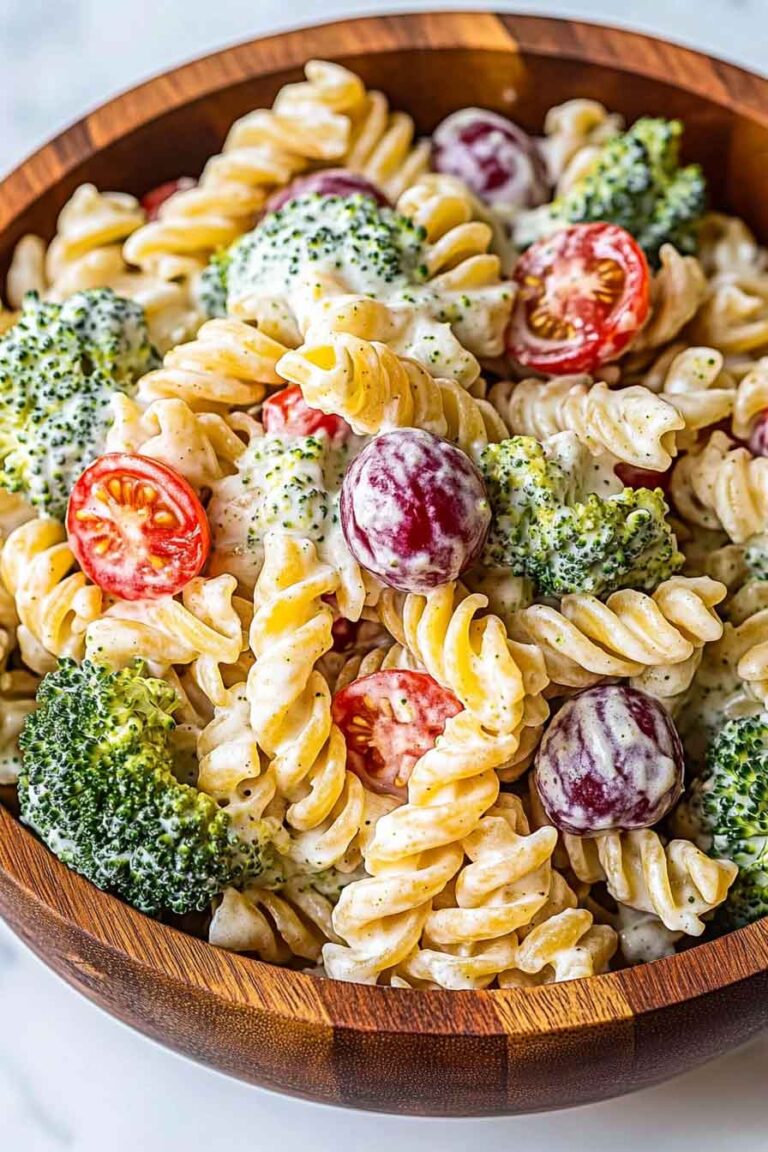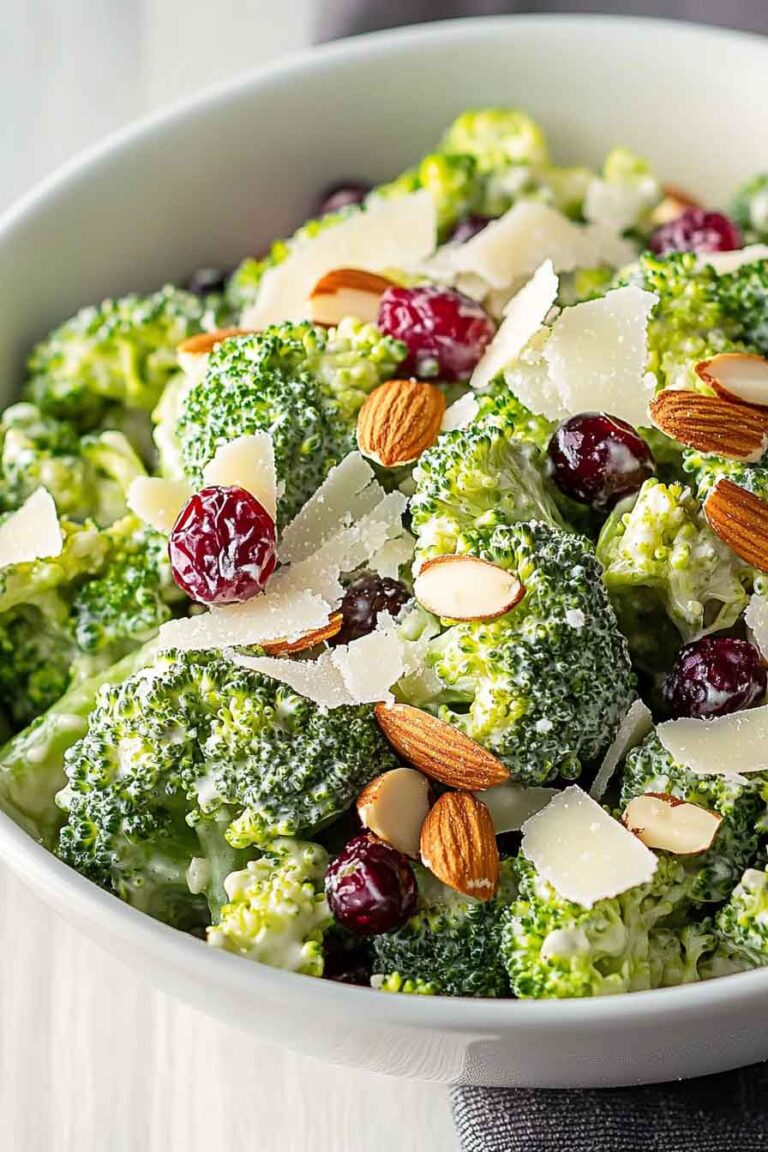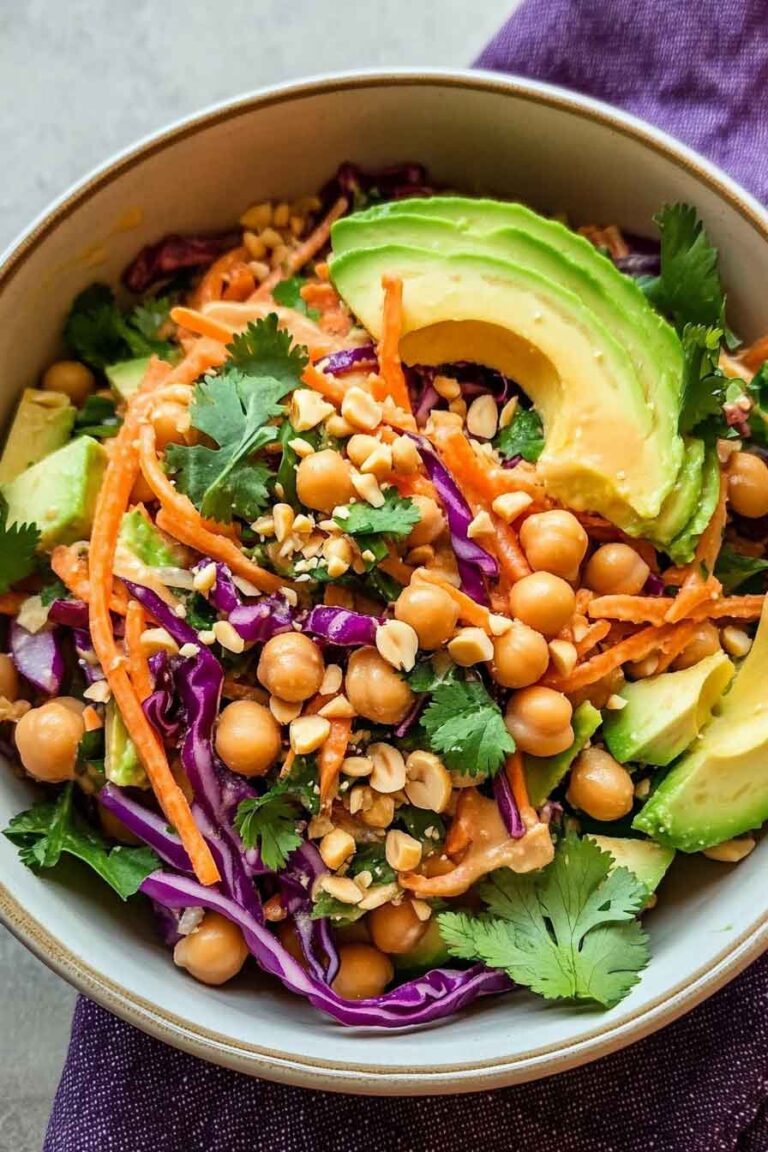Alright, this vinaigrette salad dressing? It’s light, tangy, and super easy to whip up. Just oil, vinegar, and a few extras—shaken into something fresh and full of flavor.
I started making it when I realized how simple it was to skip the bottled stuff. A splash of olive oil, some vinegar, a little mustard or honey, and boom—instant dressing. And the taste? Way better than store-bought.
You can drizzle it on greens, grain bowls, or roasted veggies. It’s super versatile and totally customizable. If you’ve got five minutes and a jar, you’ve got vinaigrette.
Let’s make it together—you’ll never look back.
Why You’ll Love This Recipe
- Foolproof for Beginners: Anyone can make this dressing—no special skills or equipment required.
- Naturally Healthy: Made from whole, real ingredients, with no added preservatives or artificial flavors. You can make it as light or rich as you like.
- Customizable Flavors: Change the acid, switch the oil, or add new herbs to make it your own. This recipe is a canvas for your creativity.
- Economical and Fresh: Homemade vinaigrette costs less and tastes brighter than most bottled options. It’s always fresh because you make only what you need.
- Meal Prep Friendly: Whip up a batch and keep it ready in the fridge. It stays delicious and ready for quick lunches, snacks, and dinners all week long.
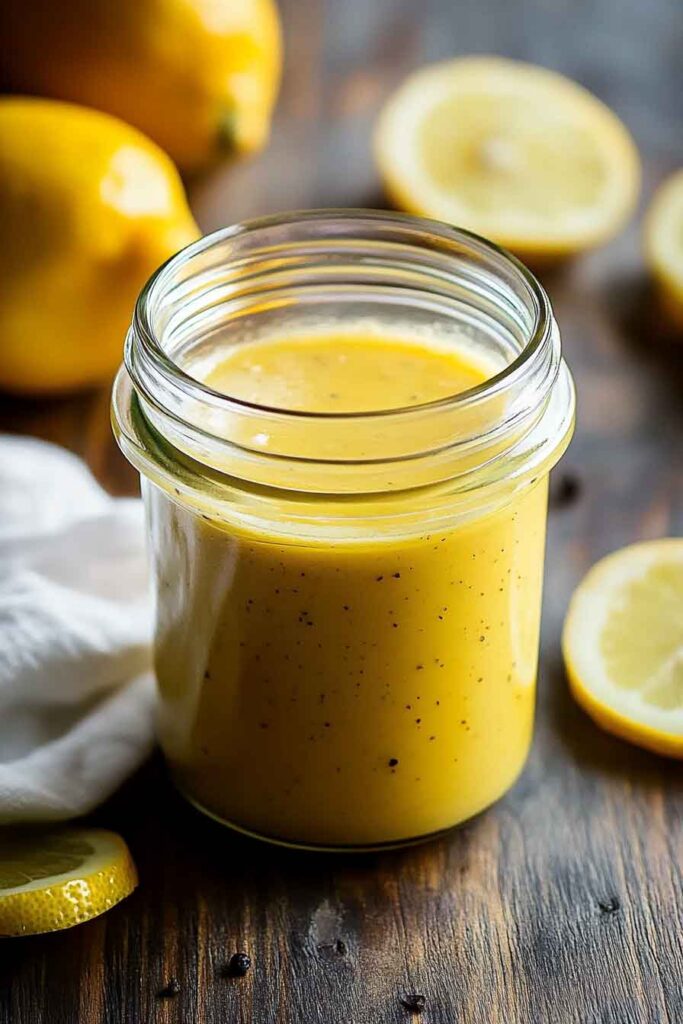
What You Need to Know Before You Start
Prep Time:
Just 5 minutes—no cooking required.
Batch Size:
Makes about ¾ cup of dressing, which will coat about 8 cups of greens (enough for 4 main salads or up to 8 side salads). If you need more, simply double or triple the recipe.
Storage:
Homemade vinaigrette keeps well in the refrigerator for up to 1 week, especially if made with only oil, vinegar, and dried spices. If you add fresh herbs, garlic, or cheese, use within 3-4 days.
Pro Tip:
If your olive oil solidifies in the fridge, let the vinaigrette sit at room temperature for 10 minutes and shake well before using.
Required Kitchen Tools
- Measuring spoons and a liquid measuring cup for accuracy.
- Small bowl and a whisk or a fork for blending by hand.
- Or, use a mason jar with a tight-fitting lid to shake the dressing until emulsified.
- Small garlic press or microplane (optional) if adding fresh garlic or zesting lemon.
- Spoon or spatula to scrape every drop into your salad.
No fancy gadgets are needed—just tools you already have at home.
Ingredients for Vinaigrette Salad Dressing
Here are the core ingredients, with some notes on each:
- Extra Virgin Olive Oil (½ cup):
This is the base of the vinaigrette. A good olive oil will add a fruity, rich flavor. If you want a lighter taste, use a neutral oil like avocado, grapeseed, or sunflower oil. - Vinegar (3 tablespoons):
Apple cider vinegar is mild and slightly sweet, perfect for most salads. Red wine vinegar gives a sharper bite and pairs well with heartier greens like kale. White wine vinegar is clean and bright. For a deeper, sweeter flavor, try balsamic vinegar. - Honey or Pure Maple Syrup (1 to 1½ teaspoons):
This little bit of sweetness rounds out the sharpness of the vinegar and brings balance. You can also use agave or skip it for a tangier vinaigrette. - Dijon Mustard (1 teaspoon):
Mustard does two things: adds a gentle tang and helps the oil and vinegar blend together smoothly, so your dressing won’t separate too quickly. - Kosher Salt (¼ teaspoon) and Freshly Ground Black Pepper (to taste):
Seasoning is key. Salt highlights flavors, and black pepper adds a subtle heat.
Optional Ingredients for More Flavor:
- 1 small clove garlic, finely minced or grated (for a pungent kick)
- 1 teaspoon fresh lemon juice or zest (for brightness)
- Chopped fresh herbs like parsley, basil, chives, or dill (for freshness)
- Pinch of dried oregano or thyme (for earthiness)
- Crumbled feta or parmesan cheese (for creaminess and savoriness)
- A splash of soy sauce or tamari (for umami depth)
All ingredients can be adjusted to taste. Start with the basics, then add any extras you like.
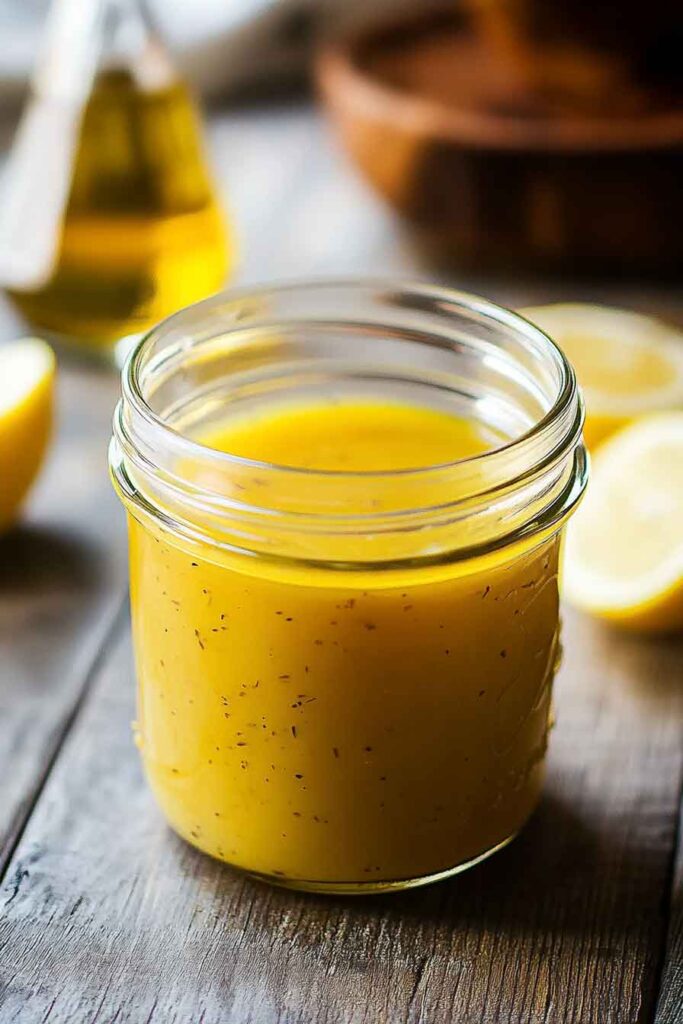
Variations for Vinaigrette Salad Dressing
- Balsamic Vinaigrette:
Use balsamic vinegar instead of apple cider or wine vinegar, and a touch more honey for sweetness. - Citrus Vinaigrette:
Replace part or all of the vinegar with fresh lemon or orange juice. Add zest for more fragrance. - Herb Vinaigrette:
Stir in 1-2 tablespoons of minced fresh herbs for a green, garden-fresh dressing. - Shallot Vinaigrette:
Add 1 tablespoon of finely minced shallot for mild onion flavor. - Creamy Vinaigrette:
Blend in a teaspoon of Greek yogurt or mayonnaise for a creamy texture. - Spicy Vinaigrette:
Whisk in a pinch of red pepper flakes or a few drops of hot sauce.
Mix and match these ideas to keep salads interesting all year long.
How to Make Vinaigrette Salad Dressing: Step-by-Step Instructions
Making homemade vinaigrette is all about the right ratios and the order you combine the ingredients. Each step matters because it ensures your dressing blends smoothly and tastes balanced.
1. Measure and Add the Ingredients
Start by placing your bowl or jar on a flat surface. Add the vinegar, honey (or maple syrup), Dijon mustard, salt, and black pepper first. Mixing the acidic ingredients and seasonings at the beginning helps the salt dissolve and flavors combine.
- Tip: If using garlic, mince it as finely as possible so it mixes in evenly without clumps.
2. Whisk (or Shake) to Blend the Flavors
Use a small whisk or fork to combine everything in the bowl. If using a jar, add the lid and shake well for 10-15 seconds. This step brings together the vinegar, mustard, sweetener, and seasonings into a well-blended base.
- Tip: If adding fresh herbs or shallots, stir them in at this stage so the flavors have time to meld.
3. Slowly Add the Oil
Pour the olive oil in a slow, steady stream while whisking quickly. This helps the oil blend smoothly with the vinegar and mustard, creating an emulsion (a mixture that doesn’t separate right away).
- If using a jar, add all the oil at once, secure the lid, and shake until the dressing is thickened and creamy.
- The dressing will look a little cloudy when it’s fully mixed—this is what you want.
4. Taste and Adjust
Dip a leaf of lettuce or a spoon into the vinaigrette. Taste for seasoning and balance:
- If it’s too tangy, add a bit more oil or a tiny splash of water.
- If it needs more brightness, add a squeeze of lemon juice.
- If it’s flat, add a pinch more salt or a touch more honey.
Adjust until it tastes just right to you.
Serving and Decoration
Homemade vinaigrette adds life to simple greens, vegetable salads, and even cooked grains. Here’s how to use and serve it for the best results:
- Toss with Greens: Pour just enough vinaigrette over washed and dried salad greens in a large bowl. Toss gently with clean hands or salad tongs until all the leaves are lightly coated and glossy—not drenched. Too much dressing can make greens soggy.
- Grain Bowls: Drizzle over cooked and cooled grains like quinoa, brown rice, or couscous for added flavor.
- Roasted Vegetables: Spoon over roasted carrots, potatoes, or asparagus while still warm to let the dressing soak in.
- Plating: For a pretty touch, garnish the salad with a sprinkle of fresh herbs or lemon zest after dressing.
Tip: Always add vinaigrette just before serving to keep greens crisp and fresh.
How to Store Vinaigrette Salad Dressing
Proper storage keeps your homemade vinaigrette fresh and tasty:
- Refrigerator: Store in a covered jar or container for up to 1 week. If you added fresh garlic, herbs, or cheese, use within 3-4 days.
- Shake or Stir Before Using: The oil and vinegar may separate as the dressing sits. Simply shake or whisk again to re-emulsify before pouring over salads.
- Room Temperature: Vinaigrette made with only oil, vinegar, and dried seasonings can sit at room temp for a few hours, but always refrigerate for longer storage.
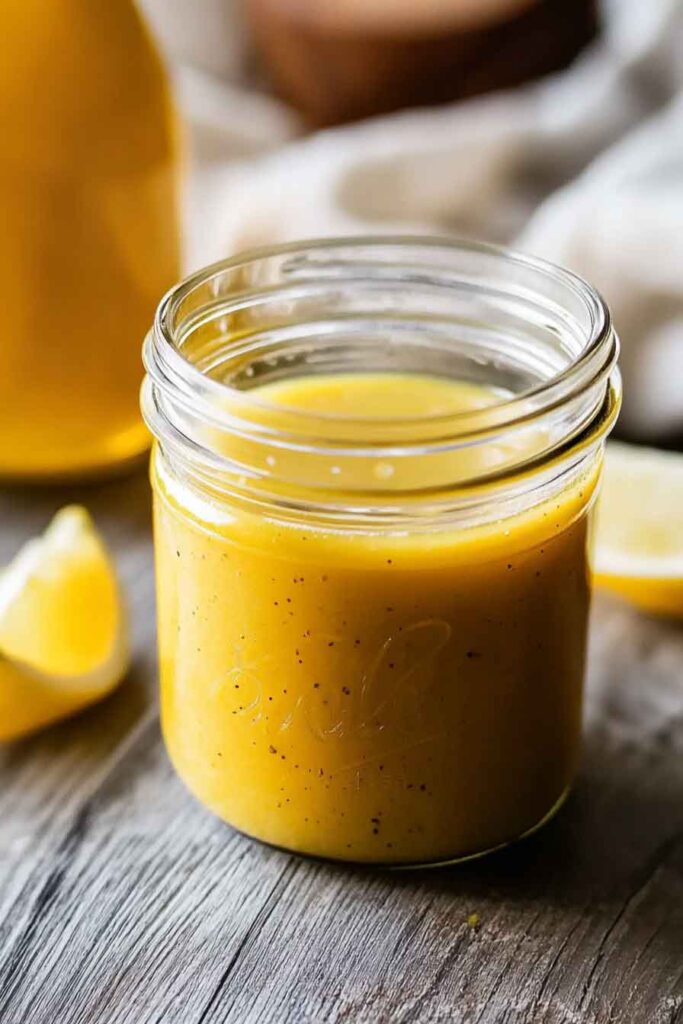
Extra Tip: If the olive oil solidifies in the fridge, take the vinaigrette out 10-15 minutes before you need it and let it warm up, then shake or whisk until smooth.
Tips and Tricks for Success
- Use Quality Ingredients: Good olive oil and vinegar make a noticeable difference since this recipe is so simple.
- Balance Flavors: Always taste and adjust for acidity, sweetness, and salt.
- Emulsify: Add the oil slowly and whisk well for a thicker, creamier dressing.
- Mix and Match: Try different vinegars, oils, and add-ins to match the salads you’re serving.
- Make Ahead: Vinaigrette is ideal for meal prep—make a batch on the weekend and enjoy fresh salads all week.
Nutrition
Below is an estimated nutrition breakdown per tablespoon of vinaigrette. Actual values may vary depending on your ingredients and additions:
| Nutrient | Per Tablespoon |
|---|---|
| Calories | 65 |
| Total Fat | 7g |
| Saturated Fat | 1g |
| Cholesterol | 0mg |
| Sodium | 40mg |
| Total Carbs | 0.5g |
| Sugars | 0.5g |
| Protein | 0g |
Vinaigrette Salad Dressing Recipe
Course: Uncategorized5-6
servings5
minutes65
kcalIngredients
½ cup (120ml) extra virgin olive oil
3 tablespoons (45ml) apple cider vinegar (or red/white wine vinegar, balsamic)
1–1½ teaspoons honey or pure maple syrup
1 teaspoon Dijon mustard
¼ teaspoon kosher salt (or fine sea salt), more to taste
Optional: 1 small garlic clove (minced), 1 teaspoon fresh lemon juice, 1 tablespoon chopped fresh herbs
Freshly ground black pepper, to taste
Directions
- Mix Base Ingredients:
In a small bowl or jar, combine vinegar, honey, Dijon mustard, salt, and black pepper. Whisk (or shake) well until blended. - Add Oil:
Slowly drizzle in the olive oil while whisking, or add all at once if using a jar and shake vigorously until the dressing looks thick and combined. - Taste and Adjust:
Taste with a salad leaf or spoon. Adjust salt, sweetness, or acidity as needed. If using, stir in minced garlic, lemon juice, or herbs. - Serve or Store:
Use immediately to dress salads or cover and refrigerate for up to 1 week. Shake or whisk again before each use.
FAQs
Q: Why did my vinaigrette separate?
A: Oil and vinegar naturally separate over time. Just whisk or shake the dressing before serving to mix it again.
Q: Can I make vinaigrette without mustard?
A: Yes, but mustard helps keep the dressing mixed together. If you skip it, just shake before each use.
Q: How do I make my vinaigrette less sour?
A: Add a bit more oil or a touch more honey to balance the tang.
Q: Is vinaigrette gluten-free?
A: Yes, as long as your vinegar and mustard are gluten-free.
Q: What’s the best way to use vinaigrette besides salads?
A: Drizzle on roasted vegetables, grain bowls, or even grilled chicken or fish.
Conclusion
Vinaigrette salad dressing is an essential recipe that every home cook should have. It’s quick, simple, and endlessly customizable, bringing freshness and bright flavor to any salad or meal. Making your own lets you adjust flavors to fit your taste and diet, and keeps your kitchen stocked with a healthy, versatile dressing.
With only a few ingredients and five minutes, you can create a dressing that elevates greens, vegetables, and even proteins—perfect for everyday meals or special occasions.

